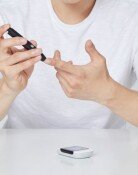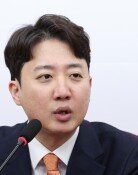Hospital Chief Pins Scandal on Hwang
Hospital Chief Pins Scandal on Hwang
Posted December. 17, 2005 10:36,
Roh Sung-il, the administrator of the MizMedi Hospital, held a press conference on December 16 to counter what Professor Hwang Woo-suk of Seoul National University said earlier in another press conference, and expressed terrible feelings about the entire matter. Roh said that Hwang denounced a fellow researcher who had worked for Hwang for three years just because he is associated with the hospital.
Roh appeared before reporters without any prepared script and almost cried while talking because his emotions ran so high.
A Summary of Rohs Press Conference-
During a phone conversation on December 15 with researcher Kim Seon-jong currently working at the University of Pittsburgh, Roh states that Hwang and Professor Kang Sung-geun forced Kim into fabricating the paper.
Hwang said to Kim that if he comes back to Korea by December 27 and helps Hwang produce embryonic stem cells, he would be the professor of Seoul National University and the head of the World Stem Cell Hub. Hwang threatened that if he refused, he would request an investigation from the prosecution.
I have doubts about how he could have created embryonic stem cells again so quickly after they were contaminated with mold and died. After the bio-ethics law went into effect in January this year, Hwang made six stem cells from December of last year to February of this year even though I did not give him stem cells. The paper on stem cells was published in the journal, Science, on March 15 of this year. It takes at least 12 weeks to perform the research involving teratoma. If he created stem cells in December, he could only finish the process after March. It takes at least two months for embryos to grow into stem cells big enough to have pictures taken of them.
Hwang created six stem cells and thawed No.2 and No. 3 frozen stem cells. Logically, he should have eight stem cells, but he had 11. Three of them exist only in the manipulated data. This is an unscrupulous act for a scientist to do.
Nine DNA fingerprints were fabricated after dividing somatic cells, which was done at Hwangs laboratory. The paper was written not by Hwang himself but by Gerald Schatten of the University of Pittsburgh. Hwang only prickled the cells.
I asked Kim whether he replaced embryonic stem cells in the laboratory with MizMedi Hospitals stem cells. He said no. The hospital has created 15 stem cell lines with surplus embryos and distributed them to 78 laboratories across the country. It is easy to obtain the stem cells that the hospital created. Also, Kim needs to accompany a researcher of SNU to enter the laboratory. Since he can not go in without SNUs permission, he is not in a position to replace stem cells.
When Hwangs team took No 2. and No. 3 stem cells that were stored in the hospital, researcher Kim kept two bottles from each stem cell. Now they are under cultivation. In 15 days, DNA fingerprints of stem cells will come out, and it will become clear whether Hwang really created at least two embryonic stem cells cloned from somatic cells.
Hwang said he can repeat the creation process of patient-tailored stem cells. The core of the paper was the fact that Hwang made one stem cell out of 17 eggs. Previously, he could create one out of 242 eggs. If he can successfully create one stem cell out of 17, it would be great, but I doubt it.
I deeply apologize for causing an unfortunate outcome and bringing disgrace to the country.
Sang-Hoon Kim corekim@donga.com




![“한동훈, 정치생명 걸고 무소속 출마해 평가받는 것 고려할만”[정치를 부탁해]](https://dimg.donga.com/c/138/175/90/1/wps/NEWS/IMAGE/2026/01/19/133186982.1.jpg)


